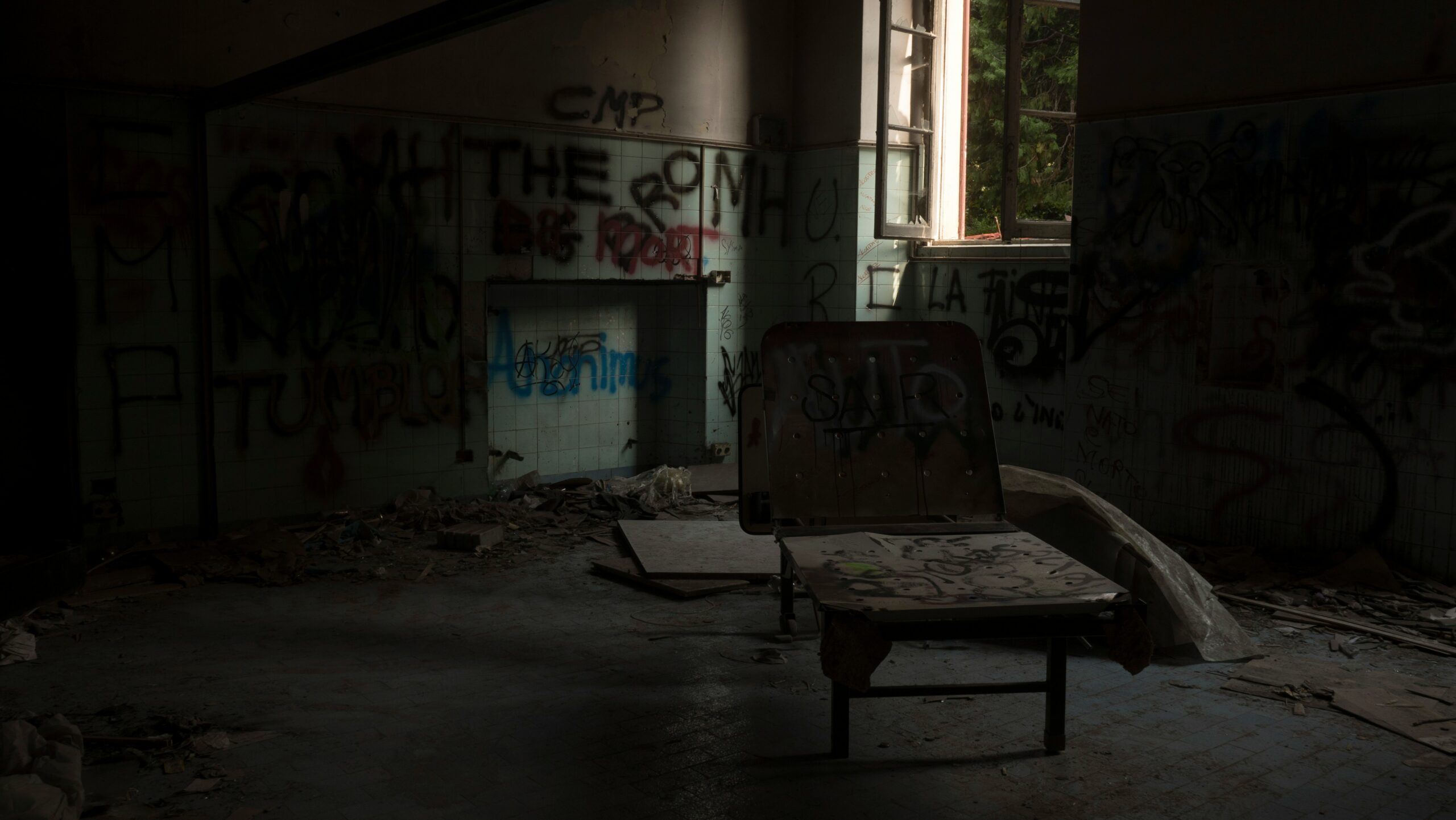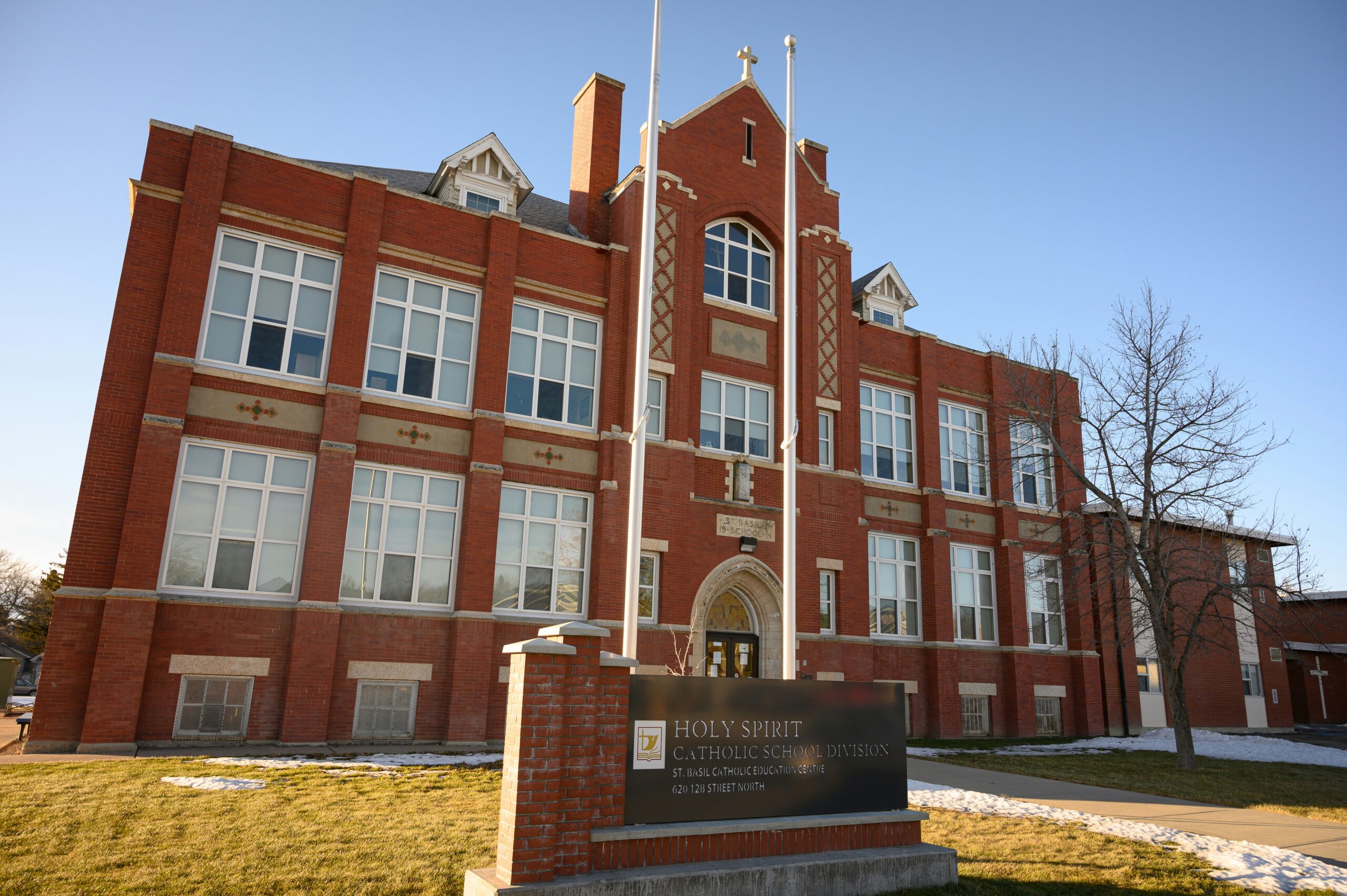Introduction to the Antioch High School Shooting
The Antioch High School shooting represents a tragic event that unfolded in Nashville, Tennessee, capturing national attention and raising concerns about safety in schools. On March 27, 2023, the community was shaken by an incident that resulted in a chaotic and devastating situation, with significant implications for students, families, and the educational environment. The event transpired at a time when institutions across the country were already grappling with issues related to school safety and violence.
In the wake of the shooting, immediate responses from law enforcement authorities were critical in managing the situation. Emergency services were rapidly deployed to the scene, working diligently to secure the area and ensure the safety of students and staff members. The swift actions of first responders underscored the urgency surrounding such tragic incidents and highlighted the importance of preparedness in schools across the nation.
As news of the Antioch High School shooting spread, the Nashville community, as well as communities nationwide, reacted with a mixture of shock and sorrow. Vigils and support gatherings emerged in the days that followed, showcasing the resilience of the community and the collective grief felt by many. Local leaders, educators, and mental health professionals emphasized the need for dialogue surrounding mental health awareness and the significance of creating secure learning environments.
This incident not only serves as a somber reminder of the vulnerabilities present in educational settings but also calls into question the policies and measures in place to protect students. The discussion around gun control, mental health resources, and school safety protocols has intensified since this incident, prompting a re-evaluation of strategies aimed at preventing future tragedies. This complex combination of factors surrounding the Antioch High School shooting sets the stage for a broader examination of the issues at hand, as communities seek effective solutions to ensure the safety and well-being of all students.
Timeline of Events on the Day of the Shooting
On the morning of the tragic shooting at Antioch High School in Nashville, Tennessee, the events unfolded rapidly and chaotically. It began around 9:00 AM when students were attending their regular classes. Schools in Nashville typically have a lockdown protocol for emergency situations, and this protocol would soon come into play.
At approximately 9:15 AM, a commotion was reported in one of the school hallways. Eyewitness accounts indicate that students began to hear sounds resembling gunfire, causing immediate panic among the pupils and faculty. Within minutes, the situation escalated, prompting the school’s administration to initiate lockdown procedures and alert law enforcement.
Law enforcement received the first emergency call at 9:18 AM, and officers were dispatched to the scene immediately. By 9:25 AM, the police arrived, and upon entering the school, they worked to secure the premises and locate the shooter. Their initial priority was to ensure the safety of the students and staff while neutralizing the threat posed by the gunman.
Over the following minutes, the police engaged in a systematic search of the building. The timeline recorded a significant police presence, with additional units arriving quickly to assist. Simultaneously, school officials were communicating with parents through digital channels to provide updates and instruction.
By 9:45 AM, law enforcement confirmed that the shooter was apprehended. The lockdown was officially lifted by 10:00 AM, but the school remained a site of active investigation. Paramedics attended to any injuries, and grief counseling services were prepared to support affected students post-incident.
In the aftermath of this tragic event, the Antioch High School community was left grappling with the emotional and psychological ramifications while deliberating on measures to enhance safety and prevent future occurrences of such violence.
Profile of the Shooter: Solomon Henderson
Solomon Henderson, the individual responsible for the tragic shooting at Antioch High School, has become a focal point of investigation in the aftermath of this distressing event. Henderson, a 17-year-old student, exhibited behaviors that may provide some insight into his motivations and the underlying factors contributing to his actions. His background reveals a complex web of social interactions and psychological challenges that may have influenced his eventual decision to engage in such violent behavior.
Reports indicate that Henderson had a troubled childhood, marked by incidents of bullying and social isolation during his formative years. These experiences may have contributed to feelings of anger and resentment, which have been identified as potential precursors to violent acts among adolescents. Additionally, Henderson’s academic performance had reportedly been declining, leading to increased stress and frustration regarding his future prospects. Such pressures often weigh heavily on young individuals, potentially driving them to seek an outlet through drastic measures.
In terms of prior incidents, there were no documented instances of severe behavioral issues reported in school records; however, peers suggested that he sometimes exhibited signs of emotional distress. Social media activity has also come under scrutiny, as Henderson allegedly expressed feelings of hopelessness and anger towards his peers in various online forums. While there is no concrete evidence that these posts directly indicate an intent to commit violence, the patterns of communication may be indicative of an individual struggling with mental health challenges.
As the investigation continues, Henderson’s profile emerges as a reminder of the intricate social dynamics and personal struggles that can lead to tragic outcomes. Understanding the behavioral patterns and the conditioning that precede such acts of violence could be invaluable in prevention strategies aimed at mitigating similar incidents in the future. The tragic event at Antioch High School serves as a reminder of the urgent need for mental health awareness and supportive interventions within educational settings.
Victims of the Antioch High School Shooting
The Antioch High School shooting on March 27, 2023, tragically claimed the lives of three individuals, each with unique stories and backgrounds. These victims are a poignant reminder of the devastating impact of gun violence within our communities. One of the victims, 17-year-old David Morgan, was a promising student known for his passion for music and a desire to pursue a career in audio engineering. David’s family and friends remember him for his vibrant spirit, always ready to lend a helping hand and share his love for music with others.
Another victim, 16-year-old Emily Rodriguez, was an avid athlete and a member of the school’s soccer team. Emily was characterized by her dedication, both in academics and sports, and her infectious enthusiasm for life. The loss of Emily has left an indelible mark on her family and teammates, who continue to honor her memory through fundraisers and sporting events in her name.
The third victim, 18-year-old Marcus Lee, was set to graduate and had aspirations of becoming a community leader. His commitment to volunteering and advocacy for social justice inspired those around him. In the wake of this tragedy, his family has engaged in various efforts to promote mental health awareness and anti-gun violence campaigns, ensuring that Marcus’s legacy lives on through positive change in the community.
In response to the shooting, local organizations and schools have come together to create memorials for the victims. These tributes serve as a solemn reminder of the lives lost and the profound effect such acts of violence can have on families and communities. From candlelight vigils to scholarship funds established in their names, the memories of David, Emily, and Marcus are now interwoven with the ongoing efforts to foster a dialogue around safety, support, and healing in the aftermath of such a heart-wrenching event.
Community Response and Support for Victims
The Antioch High School shooting in Nashville, Tennessee, sent ripples of shock and grief throughout the local community. In the aftermath of this tragic event, the response from community members, organizations, and schools has been both immediate and heartfelt. Various initiatives emerged to provide support for the victims and their families, illustrating the resilience and solidarity of the Nashville community during this dark time.
Local organizations quickly mobilized to launch fundraising efforts aimed at assisting those affected by this heart-wrenching incident. Many community members contributed generously, ensuring that victims’ families received financial assistance for medical expenses, counseling, and other needs that arose in the wake of this senseless act. Fundraising events, including charity runs and benefit concerts, garnered tremendous support, reflecting the community’s desire to rally together and help heal those who were deeply impacted.
In addition to financial aid, the community organized vigils to honor the victims and provide a space for grieving individuals to come together. These candlelight vigils created an atmosphere of compassion and remembrance, allowing participants to share their stories and express their sorrow. Schools within the district also played a crucial role in this process, as educators and administrators worked to establish safe spaces for students to discuss their feelings and emotions surrounding the tragedy.
Professional counseling services were made available to students and families dealing with the psychological aftermath of the shooting. Local mental health organizations collaborated with schools to ensure that resources were readily accessible, emphasizing the importance of seeking help in times of crisis. The community’s response highlighted the collective commitment to support one another, demonstrating that healing often begins with solidarity and understanding.
Reactions from Authorities and Lawmakers
In the wake of the Antioch High School shooting, there has been an immediate and multifaceted response from local and state authorities, as well as lawmakers. The incident has reignited a national dialogue surrounding gun control, with many officials calling for urgent reforms aimed at enhancing school safety. Local law enforcement agencies have begun to reassess their protocols regarding emergency responses to such critical incidents. Increased law enforcement presence around schools has also been a topic of discussion, with a focus on prevention and ensuring a rapid response should another tragedy occur.
State lawmakers are facing mounting pressure from constituents to take decisive action. Proposals for new legislation have emerged, aimed at strengthening background checks and restricting access to firearms for individuals deemed a danger to themselves or others. Some lawmakers advocate for the enactment of red flag laws enabling authorities to temporarily remove firearms from individuals showing warning signs of violent behavior. This legislative discussion is vital, as stakeholders emphasize the importance of balancing Second Amendment rights with the need for enhanced public safety measures, particularly within educational environments.
In addition to legislative proposals, school districts across Tennessee are evaluating their security protocols. Many administrators are calling for increased funding to improve physical security measures, such as advanced surveillance systems and fortified entry points. Moreover, mental health resources are becoming a critical focus, with the aim of addressing the root causes of violence in schools. Authorities underscore that a holistic approach, which combines both psychological support and staunch security measures, is essential in creating a safe educational atmosphere.
The reactions from authorities and lawmakers reflect a growing recognition of the need to address the underlying issues contributing to gun violence while ensuring the safety of students and staff. As discussions progress, they will play a crucial role in shaping the future of gun control and school safety policies in Tennessee and beyond.
Mental Health and the Aftermath of the Shooting
The Antioch High School shooting has undeniably left a profound impact on not only the students and staff directly affected but also the wider Nashville community. In the wake of such a tragic event, mental health emerges as a critical concern, necessitating immediate attention and action. Psychological trauma can significantly disrupt students’ academic performance and social interactions, making it imperative for schools to prioritize mental health resources and support systems.
In response to the shooting, various mental health services have been mobilized to assist students, families, and community members in managing their emotions and experiences related to the tragedy. Schools in Nashville are encouraged to partner with local mental health organizations to provide counseling and therapy services tailored to the needs of those affected. These services may include individual therapy, group counseling, and workshops focused on coping skills and resilience-building. Moreover, access to hotlines and crisis counselors can offer immediate support in the critical hours and days following such an event.
Promoting mental health awareness in schools is equally essential in creating an environment where students feel safe and supported. Educators can implement programs aimed at destigmatizing mental health issues, encouraging open conversations, and fostering a culture of understanding. Allowing students to engage in peer support initiatives can help normalize seeking help and discussing emotional challenges. Incorporating mental health education into the curriculum also equips students with the tools to recognize the signs of distress in themselves and their peers.
As communities recover from the trauma of school shootings, strengthening mental health resources and promoting awareness becomes pivotal in ensuring long-term healing. By prioritizing these initiatives, schools can play a vital role in helping students navigate their emotional responses to the tragedy, ultimately contributing to a healthier, more supportive environment.
Lessons Learned: Preventing Future School Shootings
The Antioch High School shooting has underscored the pressing need for effective school safety policies that address the complexities of gun violence in educational environments. To prevent such tragedies in the future, it is imperative for educational institutions, policymakers, and communities to collaborate on proactive safety measures. Research reveals that comprehensive safety plans should include mental health resources, threat assessment teams, and active shooter drills tailored to the unique needs of each school.
One of the best practices that emerged from the aftermath of similar incidents is the development of robust mental health programs within schools. These programs prioritize mental wellness and early intervention, allowing for the identification and support of students who may exhibit concerning behaviors. Training staff on recognizing the signs of emotional distress and offering counseling services can create a supportive environment where students feel safe to express their challenges.
Moreover, improving physical security measures is essential. This includes the installation of surveillance systems, controlled access points, and physical barriers that deter unauthorized entry. Additionally, collaboration with local law enforcement can enhance emergency response preparedness. Regular communication between schools and law enforcement agencies fosters a strong partnership that is vital in times of crisis.
Community involvement plays a significant role in creating a safe school atmosphere. Engaging parents, students, and local organizations in discussions about school safety can lead to the implementation of measures that align with the community’s values. Educational programs can also inform students about the importance of reporting suspicious behavior and help create a culture of vigilance.
By adopting these comprehensive strategies, schools can enhance their safety policies and build a robust framework for preventing future shootings. Although the pain of the Antioch High School tragedy lingers, it serves as a critical learning opportunity for improving safety in educational institutions while fostering a culture of awareness and respect for the wellbeing of all students.
Conclusion: A Call for Change
The Antioch High School shooting stands as a tragic reminder of the persistent issue of gun violence in educational institutions across the United States. The devastating impact of such incidents resonates deeply within Nashville and communities nationwide, leaving families shattered and students living in fear. The consequences are not only immediate; they extend into the long-term psyche of those affected, fostering an environment filled with anxiety and uncertainty for the future.
This heartbreaking event serves as a catalyst for reflection and a renewed commitment to addressing the complex factors that contribute to gun violence in schools. It calls for a collective responsibility—individuals, educators, parents, and policymakers must unite to advocate for meaningful reforms. Effective strategies could include implementing stricter gun control measures, investing in mental health resources, and promoting safe school environments. Advocating for a multi-faceted approach is essential in creating a culture that prioritizes the safety and well-being of students.
The voices of survivors and their families must lead the dialogue on gun violence, shaping policies that truly address the root causes of these tragedies. Community involvement is crucial; local citizens should engage in conversations that promote understanding and policy reform. Additionally, it is vital for elected officials to recognize their role in enacting legislation that prioritizes student safety over partisan biases.
Ultimately, the tragedy at Antioch High School must not be seen as a singular event but as part of a broader trend that demands urgent attention. A united front is necessary to advocate for change, fostering a safer educational landscape where students can learn without the fear of violence. The loss endured by Nashville highlights the need for immediate action—an opportunity to ensure that no community faces such heartache again.



